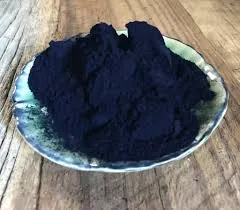Leading Manufacturer of High-Quality Indigo Fabrics for Fashion and Home Textiles
The Art of Indigo Fabric Manufacturing
Indigo fabric, renowned for its deep blue hue and rich cultural history, has captivated the hearts of artisans and fashion enthusiasts alike. The process of manufacturing indigo fabric is a blend of traditional techniques and modern innovation, creating textiles that are not only visually stunning but also steeped in heritage.
The Art of Indigo Fabric Manufacturing
Once the dye is extracted, the next step involves the dyeing process. Traditionally, the fabric is dipped multiple times into an indigo vat, with each dip deepening the color. This process requires skill and precision, as achieving the perfect shade of blue can take years of experience. Modern manufacturers are incorporating advanced techniques, such as digital printing and synthetic indigo, to meet the demands of today’s fashion industry while maintaining the essence of traditional craftsmanship.
indigo fabric manufacturer

After dyeing, the fabric undergoes several finishing processes. This includes washing, drying, and sometimes even a crinkling technique to give the fabric texture. The end result is a soft, luxurious textile that is perfect for a variety of applications, from apparel to home decor. The unique characteristics of indigo fabric, such as its fading qualities over time, allow each piece to tell a story, further enhancing its appeal.
Indigo fabric manufacturers are increasingly focusing on ethical production practices. Many are adopting fair-trade policies, ensuring that the artisans involved in the manufacturing process receive fair wages and work in safe conditions. This commitment to ethical practices not only benefits the communities involved but also resonates with consumers who are becoming more conscious of their clothing choices.
In conclusion, the art of indigo fabric manufacturing marries tradition with innovation, creating beautiful textiles that celebrate cultural history while paving the way for a sustainable future. As the demand for such fabrics grows, these manufacturers continue to honor the age-old craft of indigo dyeing, ensuring that this timeless fabric remains a staple in the world of fashion.
-
The Timeless Art of Denim Indigo Dye
NewsJul.01,2025
-
The Rise of Sulfur Dyed Denim
NewsJul.01,2025
-
The Rich Revival of the Best Indigo Dye
NewsJul.01,2025
-
The Enduring Strength of Sulphur Black
NewsJul.01,2025
-
The Ancient Art of Chinese Indigo Dye
NewsJul.01,2025
-
Industry Power of Indigo
NewsJul.01,2025
-
Black Sulfur is Leading the Next Wave
NewsJul.01,2025

Sulphur Black
1.Name: sulphur black; Sulfur Black; Sulphur Black 1;
2.Structure formula:
3.Molecule formula: C6H4N2O5
4.CAS No.: 1326-82-5
5.HS code: 32041911
6.Product specification:Appearance:black phosphorus flakes; black liquid

Bromo Indigo; Vat Bromo-Indigo; C.I.Vat Blue 5
1.Name: Bromo indigo; Vat bromo-indigo; C.I.Vat blue 5;
2.Structure formula:
3.Molecule formula: C16H6Br4N2O2
4.CAS No.: 2475-31-2
5.HS code: 3204151000 6.Major usage and instruction: Be mainly used to dye cotton fabrics.

Indigo Blue Vat Blue
1.Name: indigo blue,vat blue 1,
2.Structure formula:
3.Molecule formula: C16H10N2O2
4.. CAS No.: 482-89-3
5.Molecule weight: 262.62
6.HS code: 3204151000
7.Major usage and instruction: Be mainly used to dye cotton fabrics.

